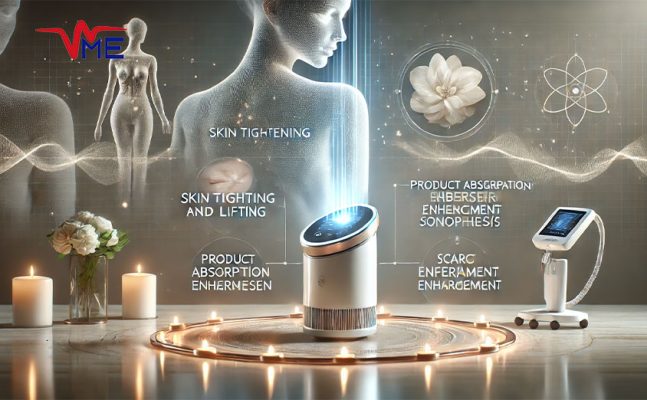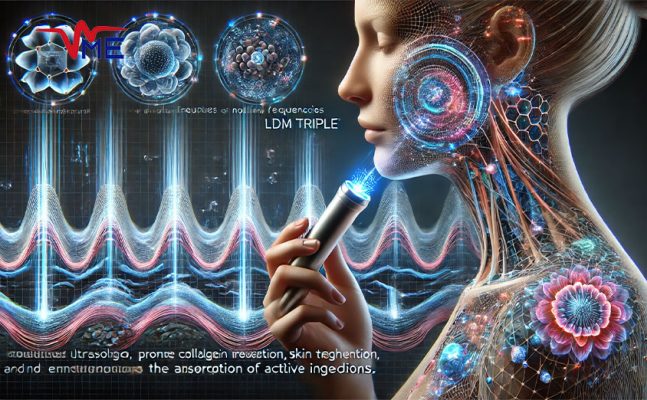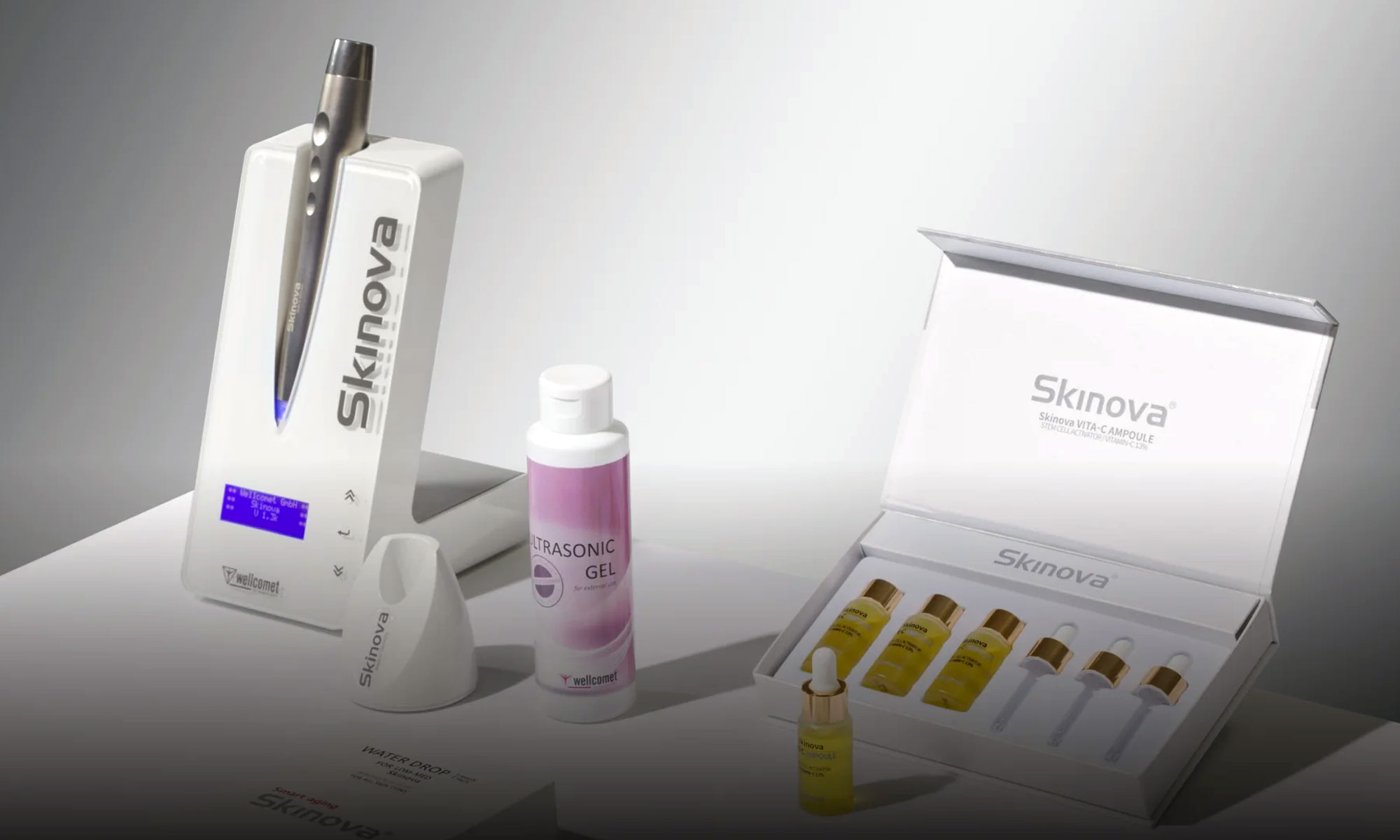LDM Triple
The Science of Ultrasound in Modern Dermatological Equipment
Ultrasound technology has rapidly advanced in the field of dermatology, providing non-invasive and effective skin treatments that address a wide range of concerns. From tightening skin to enhancing the absorption of active ingredients, modern ultrasound equipment has become an indispensable tool for dermatologists. One groundbreaking development in this field is LDM Triple , which uses multiple frequencies to penetrate the skin at different depths, stimulating repair, reducing inflammation, and promoting healthy skin regeneration. This innovative approach allows for personalized, non-invasive treatments that cater to a variety of skin types and conditions.
As ultrasound technology continues to evolve, it remains a key player in transforming how skin care is approached, delivering high-quality, effective results without the need for invasive procedures or long recovery times.
How Ultrasound Works in Skin Treatments
Ultrasound technology in dermatology uses high-frequency sound waves to penetrate the skin, delivering energy to targeted areas without causing damage to the skin’s surface. These sound waves create micro-vibrations in the tissue, which stimulate circulation, promote collagen production, and enhance the skin’s ability to repair itself. This process makes ultrasound particularly effective for skin rejuvenation, tightening, and even acne treatment.
The ultrasound waves can also be used to increase the skin’s permeability, allowing for deeper absorption of products like serums and creams, making them more effective. This is why ultrasound treatments are often paired with specialized skin care products to deliver enhanced results.
Evolution of Ultrasound in Dermatological Applications
Ultrasound has long been used in medical imaging, but its role in dermatology has grown significantly. Initially, it was primarily used for its diagnostic capabilities, but now it is a powerful tool for skin treatments. Dermatological applications of ultrasound have evolved from basic skin rejuvenation to more complex treatments for conditions such as scarring, cellulite, and skin tightening. As technologies like LDM Triple have emerged, ultrasound has become even more versatile, offering multi-frequency options that allow for more precise and customizable treatments.

How Ultrasound Functions in Dermatological Equipment
High-Frequency vs. Low-Frequency Ultrasound
Ultrasound technology varies depending on the frequency used. High-frequency ultrasound (over 3 MHz) is typically used for superficial skin treatments, targeting the epidermis to reduce fine lines, improve skin texture, and enhance product absorption. On the other hand, low-frequency ultrasound (below 1 MHz) penetrates deeper layers, making it ideal for treatments like skin tightening and collagen stimulation. The use of different frequencies enables dermatologists to tailor treatments to the specific needs of the patient, from surface-level rejuvenation to deep tissue repair.
Mechanisms of Ultrasound for Skin Healing
Ultrasound therapy enhances skin healing by promoting blood circulation and stimulating the production of collagen and elastin—two essential proteins for skin elasticity and structure. By delivering energy deep into the skin, ultrasound can improve the skin’s natural healing processes without the need for invasive techniques. This makes ultrasound treatments an excellent choice for patients looking to improve skin firmness, reduce wrinkles, and heal scars or other skin damage.
Applications of Ultrasound in Dermatology
Ultrasound technology is versatile and can be applied in a number of dermatological treatments, including:
Skin Tightening and Lifting
One of the most popular uses of ultrasound in dermatology is for skin tightening and lifting. By stimulating collagen production and contracting existing collagen fibers, ultrasound helps tighten sagging skin, providing a non-surgical alternative to traditional facelifts. This treatment is effective for areas like the face, neck, and décolleté, offering patients noticeable results without the need for invasive surgery.
Ultrasound-Assisted Product Absorption
Ultrasound can also be used to enhance the penetration of topical products. Known as sonophoresis, this process increases the permeability of the skin, allowing active ingredients in skin care products to reach deeper layers. This is particularly beneficial for anti-aging serums, moisturizers, and treatments for acne or hyperpigmentation, making them more effective.
Treatment of Scars and Cellulite
Ultrasound therapy has proven effective for treating scars and cellulite. The ultrasound waves break down fibrous tissue and stimulate skin regeneration, helping to smooth out uneven skin texture caused by scars or cellulite. This non-invasive method encourages the growth of healthy skin tissue and reduces the appearance of imperfections over time.
Benefits of Using Ultrasound in Dermatological Treatments
Ultrasound technology offers several benefits that make it a preferred method for skin treatment:

Non-Invasive and Safe for All Skin Types
Ultrasound is a completely non-invasive treatment, meaning there are no incisions, injections, or harsh chemicals involved. This makes it suitable for all skin types, including sensitive skin. Additionally, because the treatment is gentle and does not damage the skin’s surface, there is minimal to no downtime, allowing patients to return to their normal activities immediately after treatment.
Enhanced Penetration for Skin Therapies
One of the key benefits of ultrasound is its ability to increase the penetration of active ingredients used in skin care treatments. By delivering these ingredients deep into the skin, ultrasound makes treatments more effective, improving hydration, reducing signs of aging, and treating acne or hyperpigmentation more efficiently.
Stimulating Collagen Production
Collagen production naturally declines with age, leading to sagging skin and wrinkles. Ultrasound treatments stimulate collagen production deep within the skin, helping to restore firmness and elasticity. This makes ultrasound a powerful anti-aging tool, providing long-lasting results with minimal intervention.
Comparing Ultrasound Technology with Other Skin Treatments
Ultrasound vs. Laser for Skin Rejuvenation
Both ultrasound and laser treatments are effective for skin rejuvenation, but they work in different ways. While laser treatments use light energy to resurface the skin and stimulate collagen, ultrasound uses sound waves to penetrate deeper layers without affecting the surface of the skin. This makes ultrasound a gentler option with less downtime, making it ideal for patients who want effective results without the recovery period associated with laser treatments.
Microneedling vs. Ultrasound
Microneedling involves creating tiny punctures in the skin to stimulate collagen production, while ultrasound uses sound waves to achieve similar effects. While both treatments are effective, ultrasound offers the advantage of being non-invasive, with no risk of infection or skin damage. For patients with sensitive skin or those seeking a gentler alternative to microneedling, ultrasound is an excellent option.
Innovations in Ultrasound-Based Dermatological Equipment
As ultrasound technology evolves, new innovations are enhancing the effectiveness and versatility of treatments.

Multi-Frequency Ultrasound Devices
One of the latest advancements in ultrasound technology is the development of multi-frequency devices, such as LDM Triple, which allow dermatologists to treat different layers of the skin simultaneously. These devices can switch between frequencies during treatment, providing deeper penetration for more complex skin issues while addressing surface-level concerns like wrinkles or uneven texture.
Combined Ultrasound and Radiofrequency Treatments
Combining ultrasound with radiofrequency (RF) has created a powerful synergy for skin tightening and body contouring. While ultrasound stimulates collagen production and enhances product absorption, RF delivers heat energy to deeper tissues, boosting fat reduction and skin firming. This combination offers comprehensive skin improvement with impressive, long-lasting results.
The Future of Ultrasound in Skin Care
Ultrasound technology is revolutionizing the field of dermatology, offering non-invasive solutions that effectively target a wide range of skin concerns. Whether it’s for tightening the skin, reducing scars, or enhancing product absorption, ultrasound devices are helping dermatologists deliver superior results. As innovative technologies like LDM Triple continue to evolve, ultrasound is poised to remain a leading solution in skin care, providing patients with advanced, non-invasive treatments that promote long-term skin health.
The future of dermatology lies in technologies that are not only effective but also safe and comfortable for patients. LDM Triple is a prime example of how multi-frequency ultrasound treatments can redefine skin care, providing both immediate improvements and long-term benefits for healthier, more youthful-looking skin. As these technologies become more accessible, ultrasound will undoubtedly continue to transform the landscape of modern dermatology.




This article perfectly explains the role of ultrasound in modern dermatology. Very insightful and easy to follow!